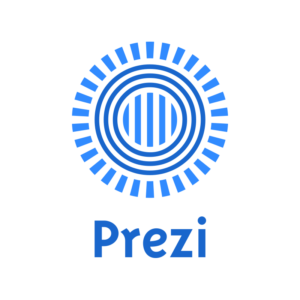For my evaluation of a Multimedia app, I have chosen to look into Prezi. I thought it would be interesting to look into Prezi because it is a web application that allows for instructors to provide material that aligns with some of the Multimedia Principles but it also allows for students to complete projects that encourage them to exercise the Multimedia Principles; therefore, Prezi can be used for both Multimedia Instruction and Learning. To start, I will be looking at the specific Multimedia Principles as outlined in The Cambridge Handbook of Multimedia Learning (Mayer, 2014).
Multimedia Principle: Prezi allows you to easily import pictures, words and videos on one slide! Ultimately, Prezi is a great example of the temporal and spatial contiguity principles due to the way you can adjust the flow of the presentation.
Coherence Principle: Prezi encourages educators and students to make use of the coherence principle. It is not meant for large chunks of text, rather it is meant for concise information with space for relative photos and secondary resources.
Signalling Principle: Prezi provides arrows, bolded and italicized options, and sequential flow to help educators focus on the signalling principle.
Self Explanation Principle: Prezi can be used to help students get practice with the self explanation principle, they are much more likely to expand their learning when making a Prezi than they would be when writing a simple essay. The self explanation principle gets students and educators away from rote learning and encourages everyone to make personal connections and find personal relevance to the information at hand.
I have created a short Prezi to demonstrate how these principles and many others can be used in the program.
Personally, I have not spent much time working on assignments using Prezi. In middle school and high school, Prezi was always offered as an extension assignment that could completed after you handed in a formal essay. I believe that teachers should be shifting away from the mindset that Prezi is only useful for optional assignments; instead, teachers should be providing students with opportunities to convey their knowledge using a program that works best for how they learn. Prezi provides students with the chance to display knowledge using pictures, words, videos, and sequential transitions. Furthermore, while teachers are giving presentations to their students, the students are much more likely to be receptive to the information when it is presented with the Multimedia Principles being kept in mind. For example, Prezi allows students to engage in the information in multiple ways that in turn, create a more concrete understanding; this is much more effective than a lecture made up of solely audio cues.
As with every other great app, Prezi does have a few downsides.
Pricing and Privacy: Prezi has a variety of different types of accounts. For example, you can sign up as a student, educator or a business and within those categories there a re further sub-categories. I was able to sign up as an elementary educator for free, however, it asked me if I would like to make it accessible to everyone on the internet or if I wanted it to only be available to those with the link. I was only able to continue for free if I made it accessible to all on the internet; this is definitely a drawback due to the strict privacy requirements that are enforced by the school district.
References
Mayer, R. E. (2014). The Cambridge handbook of multimedia learning. Cambridge: Cambridge University Press.
 Photo retrieved from: https://commons.wikimedia.org/wiki/File:Prezi_logo_transparent_2012.png
Photo retrieved from: https://commons.wikimedia.org/wiki/File:Prezi_logo_transparent_2012.png

rmccue
Good job!